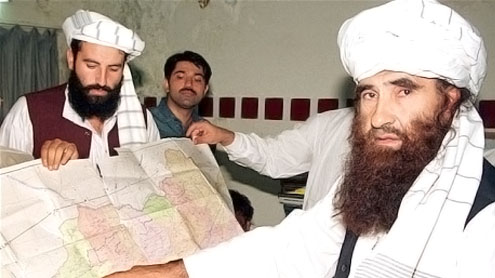 The family criminal enterprise known as the Haqqani Network conducts terrorist attacks inside Afghanistan by keeping in constant phone contact with its suicide bombers before and during attacks.
The family criminal enterprise known as the Haqqani Network conducts terrorist attacks inside Afghanistan by keeping in constant phone contact with its suicide bombers before and during attacks.
This level of sophistication, coupled with hands-on terrorist operations, is one reason the U.S. now considers Haqqani its most lethal enemy, even more so than al Qaeda and the Taliban.The network is operating out of a safe haven across the border in the town of Miram Shah, Pakistan, with near impunity and little to fear from NATO troops or Islamabad.Meanwhile, al Qaeda is using Afghanistan as a training ground for Arab recruits. If the recruits do well in the fight, they are reprogrammed to attack the United States.
This assessment of al Qaeda and the Haqqani Network is contained among roughly 1,250 pages of documents and exhibits released by U.S. Central Command in the investigation of the Aug. 4 CH-47 helicopter downing that killed 30 Americans, including 17 Navy SEALs.Army Brig. Gen. Jeffrey Colt and his team began the investigation by receiving a briefing in Kabul from senior U.S. military war planners and intelligence officers. CentCom included a declassified 134-page transcript of the briefing. Gen. Colt wanted to understand the enemy in Afghanistan and how a special operations task force decides to target them.
The network is led by Sirajuddin Haqqani and his brother Badruddin.“[They have a] tremendous amount of ability to push forces cross the board,” one unnamed briefer told Gen. Colt. “We consider them the most lethal, resolute and resilient of the insurgent element we are fighting today. They have the ability to push forces across, conduct attacks.”The briefer said the U.S. has intercepted calls between Haqqani – which one is not specified – and his fighters as they carried out an attack.
As an example, the briefer talked about Haqqani deploying nine suicide bombers to attack the Inter-Continental Hotel in Kabul in June, one of the most brazen attacks in Afghanistan’s well-fortified capital.The briefer said: “The end of June, the Inter-Continental Hotel in Kabul, these guys all had suicide vests on, they were using small arms, [and] as they were attacking from the roof of the hotel, they were calling back [situation reports] to Badruddin Haqqani, who was just across the border during this. So very hands-on. See, it is very easy for them to attack and get back across the border, lick their wounds, re-arm, re-equip, and prepare for another attack at a later date.”
All nine attackers were killed. The intercepts are the likely reason the NATO command so quickly named Haqqani as the mastermind.In one of his last public statements as Joint Chiefs of Staff chairman, Navy Adm. Mike Mullen accused Islamabad of providing Haqqani a safe haven and aiding the network in attacks in Afghanistan.
The briefing also disclosed that al Qaeda is repositioning fighters from Pakistan’s tribal areas into Afghanistan’s Kunar province. A briefer said al Qaeda is under pressure, presumedly from Pakistani forces, prompting the move to a rugged border area largely abandoned by NATO troops.“The other thing is they are very much invested in the Taliban fight,” the briefer stated. “If the Taliban wins at the end of the day over here in Afghanistan, then that is a win for al Qaeda. So they are ‘all in’ as far as the Taliban is concerned.” – WT











